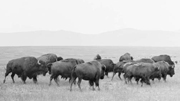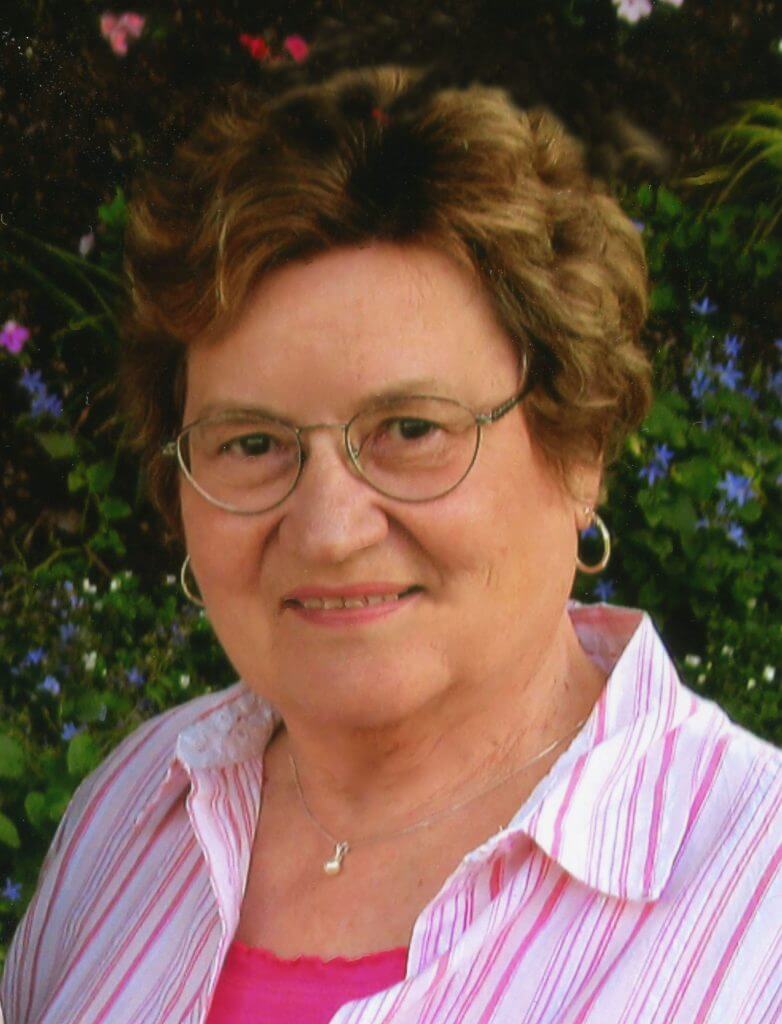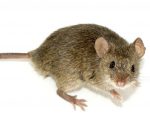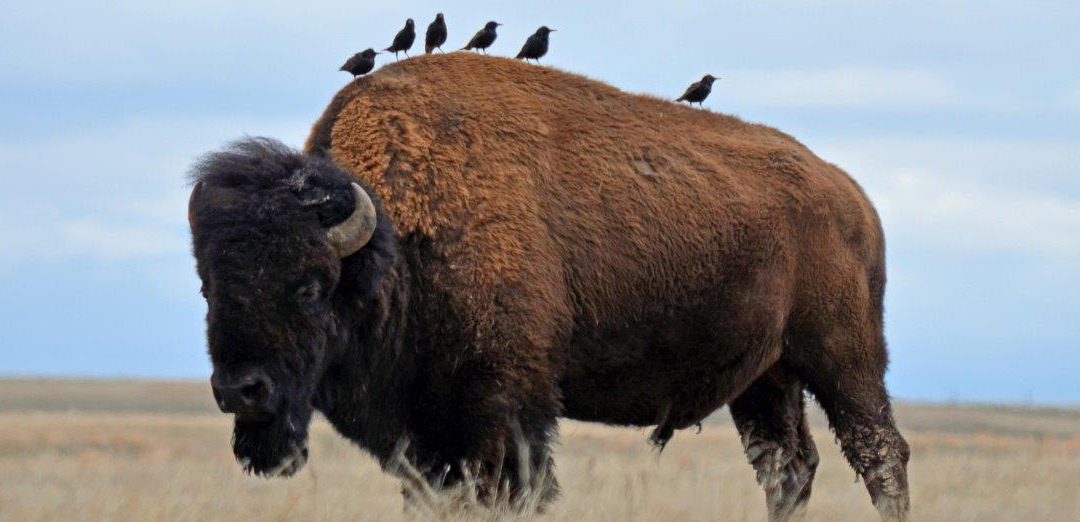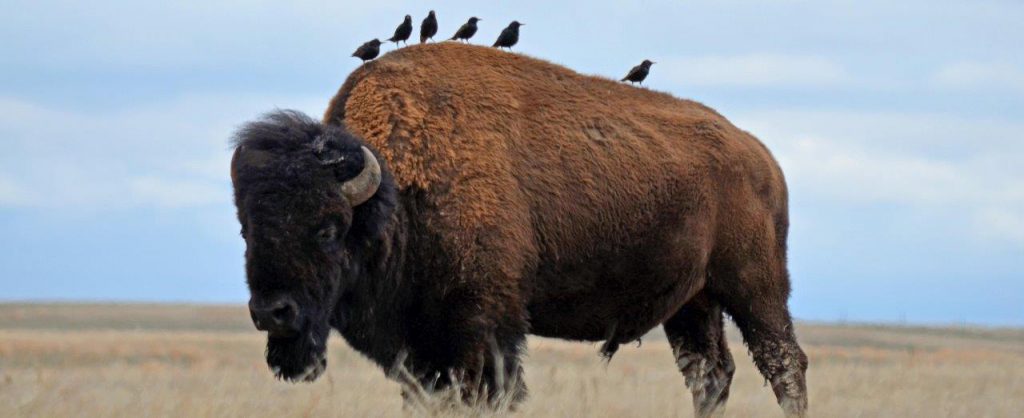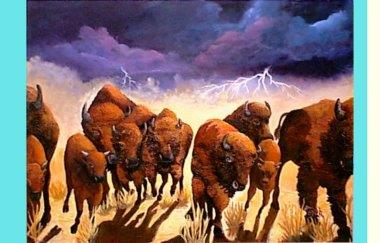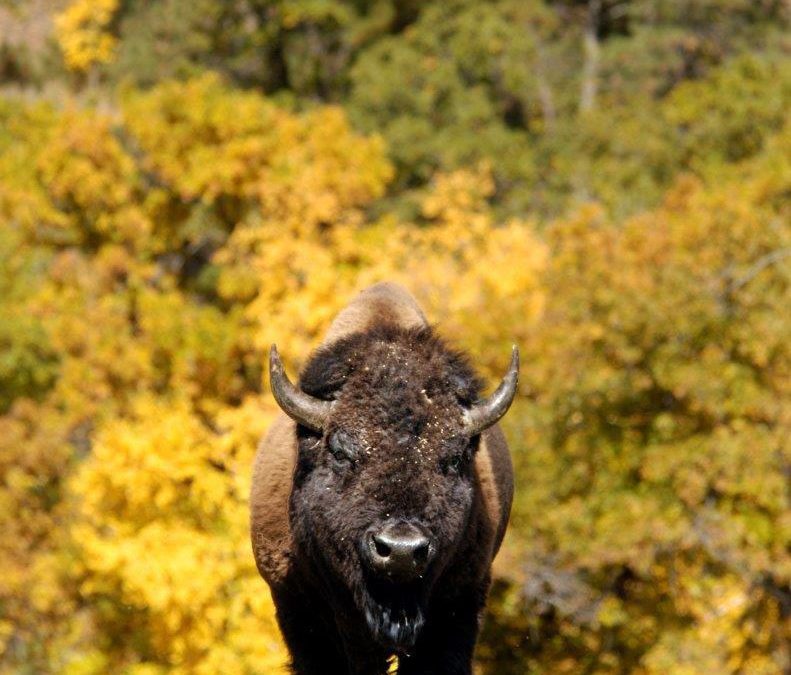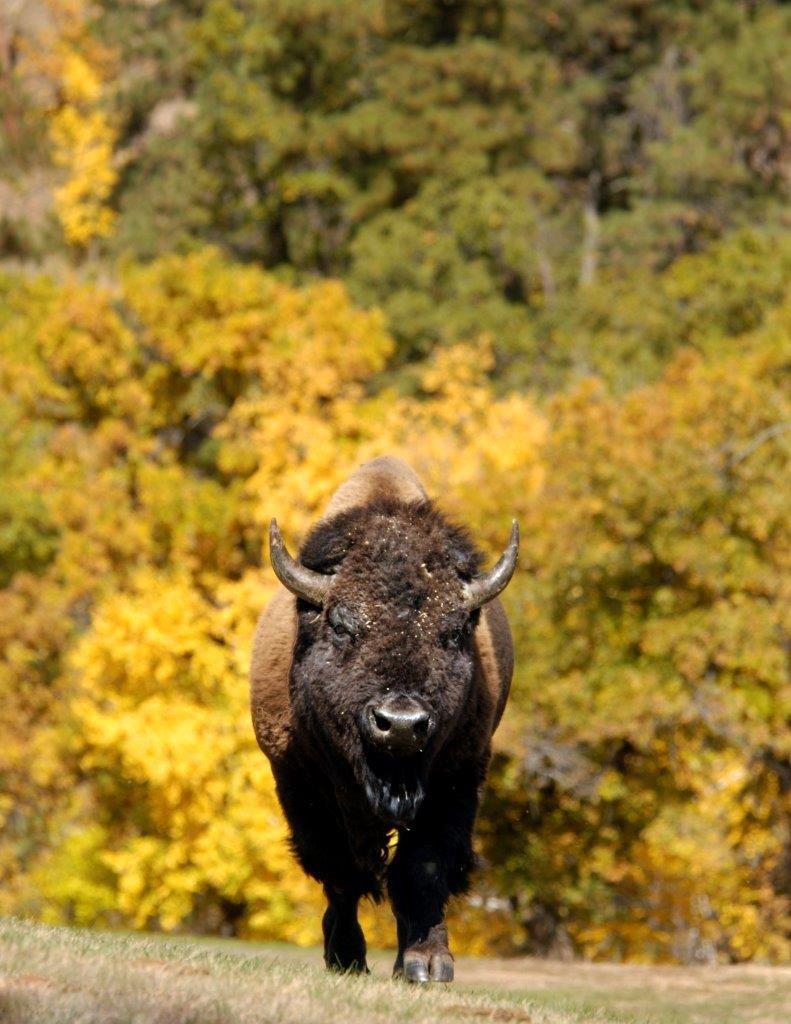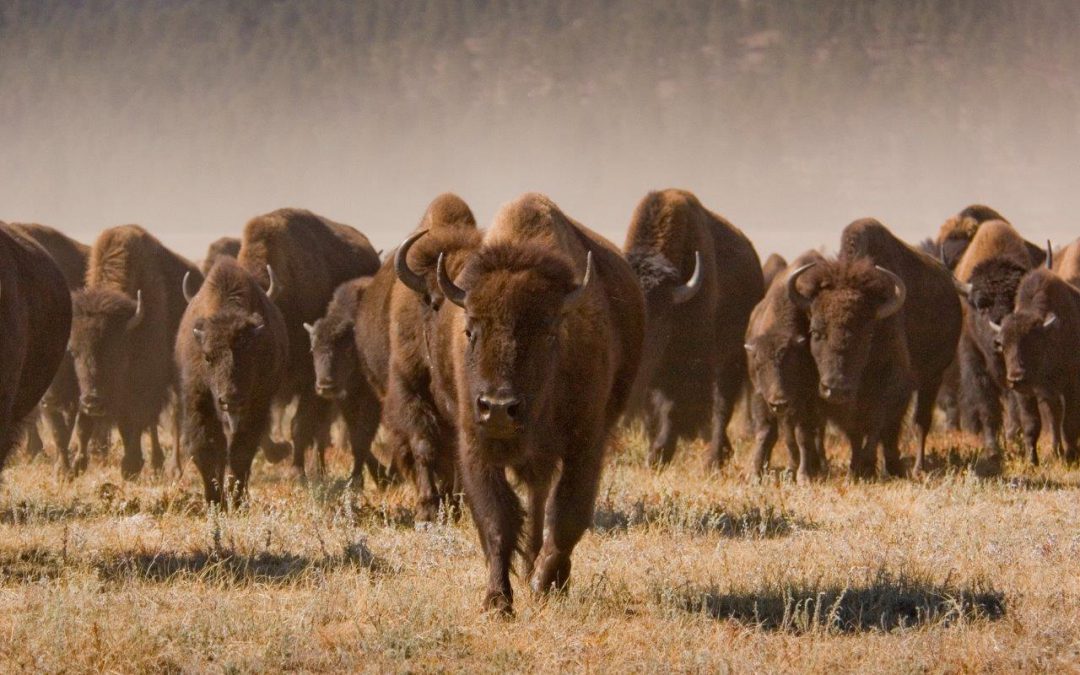
The Buffalo Stone
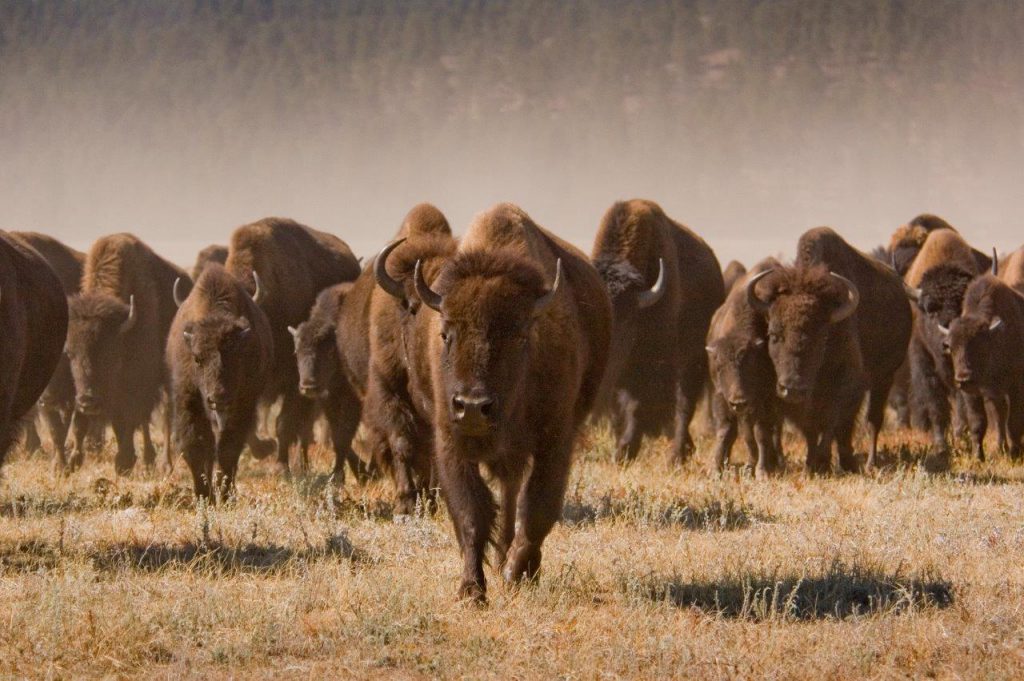 A small stone, which is often a fossil shell, or sometimes only a queer shaped piece of flint, is called by the Blackfeet I-nĭs´kĭm, the buffalo stone.
A small stone, which is often a fossil shell, or sometimes only a queer shaped piece of flint, is called by the Blackfeet I-nĭs´kĭm, the buffalo stone.
This stone has great power, and gives its owner good luck in bringing the buffalo close, so that they may be killed.
The stone is found on the prairie, and anyone who finds one is thought to be very lucky.
Sometimes a man who is going along on the prairie will hear a queer faint chirp, such as a little bird might make. He knows this sound is made by a buffalo stone.
He stops and searches for it on the ground, and if he cannot find it, marks the place and comes back next day to look for it again. If it is found, he and all his family are glad.
The Blackfeet tell a story about how the first buffalo stone was found.
Long ago, one winter, the buffalo disappeared.
The snow was deep, so deep that the people could not move in search of the buffalo; so the hunters went as far as they could up and down the river bottoms and in the ravines, and killed deer and elk and other small game, and when these were all killed or driven away the people began to starve.
One day a young married man killed a prairie rabbit. He ran home as fast as he could, and told one of his wives to hurry and get a skin of water to cook it.
She started down to the river for water, and as she was going she heard a beautiful song. She looked all about, but could see no one who was singing.
The song seemed to come from a big cottonwood tree near the trail leading down to the water. As she looked closely at this tree she saw a queer stone jammed in a fork where the tree was split, and with it a few hairs from a buffalo which had rubbed against the tree.
The woman was frightened and dared not pass the tree.
Soon the singing stopped and the I-nĭs´kĭm said to the woman,
“Take me to your lodge, and when it is dark call in the people and teach them the song you have just heard.
“Pray, too, that you may not starve, and that the buffalo may come back. Do this, and when day comes your hearts will be glad.”
The woman went on and got the water, and when she came back she took the stone and gave it to her husband, telling him about the song and what the stone had said.
As soon as it was dark, the man called the chiefs and old men to his lodge, and his wife taught them the song that she had heard.
They prayed too, as the stone had said should be done.
Before long they heard far off a noise coming.
It was the tramp of a great herd of buffalo.
Then they knew that the stone was powerful, and since that time the people have taken care of it and have prayed to it.
Story told by Blackfeet and recorded by George Bird Ginnell.

Francie M Berg
Author of the Buffalo Tales &Trails blog
